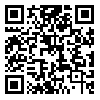BibTeX | RIS | EndNote | Medlars | ProCite | Reference Manager | RefWorks
Send citation to:
URL: http://jsmt.khu.ac.ir/article-1-182-en.html
The incidence of lower extremity injuries in young soccer players is high, but the risk factors for injuries are unknown. Thus, the aim of this study was to investigate relationship between static lower extremity alignment and injuries in adolescent soccer players. Four teams (78 players) playing at Tehran Asia vision adolescence primer league (14-16 years old) participated in this study. Before entering the season Navicular drop, quadriceps angle, knee hyperextension, genu varum and body mass index was measured. Players were monitored for musculoskeletal injuries through a season (7-month period). overall injury rate was 8.7 injuries/1000 player-hours (95% CI=7.01-10.10). Logistic regression modeling indicated that Navicular drop in preferred foot (OR=4.5; p=0.001), Q angel in preferred leg (OR=2.77; p=0.048), and genu varum (OR=4.06; p=0.021) were all associated with injuries but no association was found in other parameters. Players had an approximately 3.47 times greater chance of suffering a lower extremity injury if they have Navicular drop greater than 1.5 centimeter and approximately 2.77 times greater chance of suffering injury if they have Q angel greater than 15.5 degrees. These findings show that multiple anatomic measures such as Navicular drop, genu varum and Q angle can predict soccer players’ injuries. Results of this study are valuable for coaches and players for injury prevention.
Received: 2017/07/17 | Accepted: 2017/07/17 | Published: 2017/07/17
| Rights and permissions | |
 |
This work is licensed under a Creative Commons Attribution-NonCommercial 4.0 International License. |







